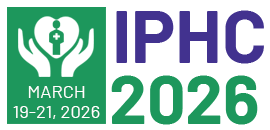Title : Barriers and enablers to utilizing a mobile application-based clinical decision support system in managing perioperative adverse events among anesthesia providers: A cross-sectional survey in China
Abstract:
Background: Perioperative adverse events (PAEs) pose a substantial global health burden, contributing to elevated morbidity, mortality, and healthcare expenditures. The adoption of clinical decision support systems (CDSS), particularly mobile-based solutions, offers a promising avenue to address these challenges. However, successful implementation hinges on understanding anesthesia providers’ knowledge, attitudes, and willingness to embrace such technologies.
Objectives: This study aimed to evaluate the knowledge, attitudes, and willingness of Chinese anesthesia professionals to adopt a mobile CDSS for PAE management, and to identify key factors influencing its implementation.
Methods: A nationwide cross-sectional survey was conducted among anesthesia providers in China from September 5 to December 31, 2023. Participants included anesthesiologists and nurse anesthetists, who play pivotal roles in perioperative care. A 51-item questionnaire, structured around the Knowledge-Attitude-Practice (KAP) framework, was distributed via WeChat through professional anesthesia associations. The questionnaire covered four domains: demographic characteristics, knowledge assessment, attitude evaluation, and practice willingness. Multivariable regression analyses identified predictors of KAP outcomes, with sensitivity analyses focusing on nurse anesthetists.
Results: The study included 2,440 anesthesia professionals (2,226 anesthesiologists and 214 nurse anesthetists). Overall, 87.3% (2,130/2,440) expressed willingness to adopt the CDSS, with 87.5% (1,947/2,226) of anesthesiologists and 85.5% (183/214) of nurse anesthetists showing readiness. However, only 39.2% (956/2,440) were satisfied with existing incident management systems. Key findings indicated that higher knowledge scores were associated with female gender (coefficient=0.19, p=.003), advanced education, and lack of prior informatics experience (coefficient=0.29, p<.001). Nurse anesthetists scored lower than anesthesiologists (coefficient=-0.76, p<.001). Negative attitudes were more prevalent among older practitioners (coefficient=-0.13, p<.001), females (coefficient=-0.66, p<.001), nurse anesthetists (coefficient=-1.12, p=.003), and those without prior PAE exposure (coefficient=-0.97, p<.001). Higher willingness was observed among practitioners in Southwest China (coefficient=0.10, p=.048), those with positive attitudes (coefficient=0.06, p<.001), and those dissatisfied (coefficient=0.32, p<.001) or neutral (coefficient=0.11, p=.02) towards existing systems. Infrequent departmental incident discussions would reduce practice willingness (coefficient=-0.08, p=.01).
Conclusions: This national study highlights a strong readiness among Chinese anesthesia professionals to adopt mobile CDSS for PAE management. However, critical barriers, including role-specific knowledge disparities and ineffective organizational communication, must be addressed to ensure successful implementation. Collaborative efforts among local authorities, healthcare facilities, anesthesia departments, and technology developers are essential to design and implement tailored strategies. Key recommendations include interdisciplinary training programs to enhance nurse anesthetists’ competencies, institution-level incentives to promote incident reporting, and user-centered CDSS designs that prioritize seamless integration into clinical workflows. These measures are vital for improving perioperative incident reporting systems and ultimately advancing the safety and outcomes of surgical patients.



